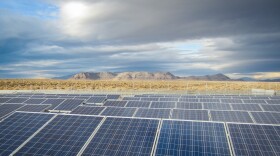-
In Las Vegas, Interior Secretary Deb Haaland on Tuesday announced new efforts to facilitate more renewable energy development, including cutting by 50% rent and fees charged for wind and solar projects on public lands.
-
The Colorado River and the Snake River rank Nos. 1 and 2 on a conservation group's list of the 10 most endangered rivers in the country.
-
A proposed lithium mine along the Nevada-Oregon border would produce critical materials for electric car batteries along with local jobs, but critics say the damage to the environment, including the ancestral lands of multiple tribes, isn't worth it.
-
A bill that passed the House this week would give the legislature more control over the energy codes and would prohibit local jurisdictions from enacting their own —unless they’ve already been in place before 2018.
-
A new report shows many states in the West have the largest solar energy industries relative to the size of their economies, with Nevada in the top spot.
-
“We have to think swiftly,” said Crystal Tulley-Cordova, principal hydrologist for the Navajo Nation. “Otherwise, we will continue to be in the situation that we are in, or even in worse circumstances.”
-
The U.S. Energy Information Administration expects oil, gas and coal production – and C02 emissions – to rise in 2022. Extreme temperatures are partly to blame.
-
The U.S. Energy Information Administration projects that there was a 14% dip in hydropower in the U.S. this year. The vast majority of that decline is in the West. Less moisture and higher temps meant lower reservoir levels and decreased the ability to get energy from hydro dams. While utilities have long prepared for droughts, they’re becoming more frequent due to climate change.
-
The U.S. Energy and Employment Jobs report came out Tuesday, showing an overall decline in energy jobs around the nation.
-
As temperatures spike, so will electricity bills. Finding ways to save money while staying cool is crucial.

Play Live Radio
Next Up:
0:00
0:00
Available On Air Stations











